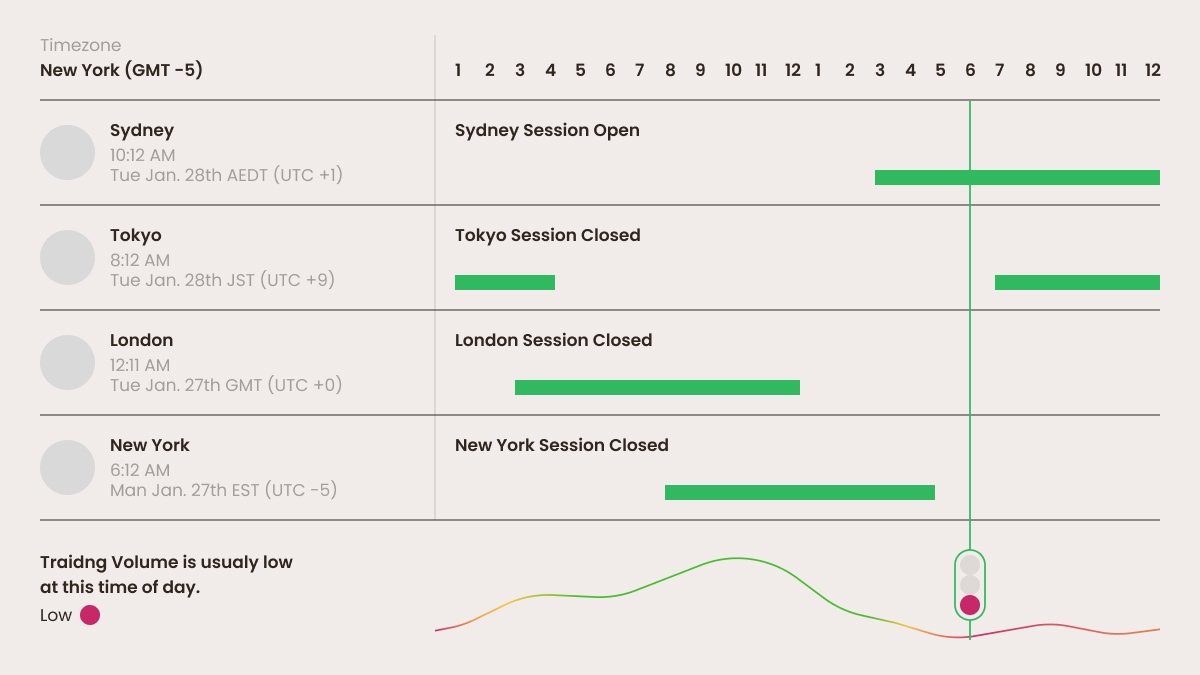
Los traders de Forex a menudo adaptan sus estrategias para aprovechar los momentos específicos de las sesiones de trading y las superposiciones para optimizar sus ganancias. Aquí hay algunas estrategias que se pueden emplear durante varias horas del mercado Forex:
1. Trading de ruptura
Descripción
Esta estrategia consiste en identificar niveles clave de soporte y resistencia, y realizar operaciones cuando el precio rompa estos puntos.
Aplicación durante las superposiciones
Durante las superposiciones, como la de Londres/Nueva York, los traders pueden esperar movimientos significativos de precios. Cuando el precio rompe por encima de la resistencia o por debajo del soporte, los traders entran en posiciones en la dirección de la ruptura.
Herramientas
Usa indicadores técnicos como las bandas de Bollinger o líneas de tendencia para identificar rupturas.
2. Scalping
Descripción
El calping es una estrategia a corto plazo que implica realizar un gran número de operaciones para capturar pequeños movimientos de precio.
Aplicación durante las superposiciones
La mayor volatilidad y liquidez durante las superposiciones crean condiciones ideales para el scalping. Los traders pueden explotar pequeñas fluctuaciones en los precios con spreads ajustados, buscando ganancias rápidas.
Herramientas
Usa un gráfico de 1 minuto o 5 minutos con indicadores como el RSI o medias móviles para encontrar rápidamente puntos de entrada y salida.
3. Seguimiento de tendencias
Descripción
Esta estrategia se aprovecha de las tendencias del mercado existentes, con el objetivo de entrar en operaciones en la dirección del movimiento prevalente del mercado.
Aplicación durante las superposiciones
Durante períodos de alta actividad como la superposición de Londres y Nueva York, pueden formarse tendencias fuertes. Los traders buscan señales de confirmación (como cruces de medias móviles) para entrar en operaciones que sigan la tendencia.
Herramientas
Indicadores de tendencia como el MACD (convergencia/divergencia de medias móviles) y el ADX (índice direccional promedio) pueden ayudar a evaluar y seguir las tendencias.
4. Trading en rango
Descripción
El trading en rango implica identificar niveles de soporte y resistencia, y comprar o vender en estos niveles.
Aplicación durante los tiempos de sesión
En la sesión asiática, donde la volatilidad suele ser más baja, los traders pueden identificar rangos estables para operar. Durante las superposiciones, si los precios rompen un nivel clave de rango, los traders pueden ajustar su estrategia de trading en rango a una de ruptura.
Herramientas
Usa indicadores no expansivos como el RSI para identificar condiciones de sobrecompra o sobreventa dentro del rango.
5. Trading con noticias
Descripción
Esta estrategia enfatiza el trading basado en publicaciones de noticias económicas que afectan de forma significativa los movimientos del mercado.
Aplicación durante las superposiciones
Muchas publicaciones económicas importantes, como los datos de nóminas no agrícolas de EE. UU. o los anuncios del BCE, a menudo coinciden con las superposiciones de sesiones. Los traders se preparan para los picos de volatilidad, analizando indicadores económicos y posicionándose para aprovechar los movimientos de precios resultantes.
Herramientas
Los calendarios económicos, el análisis de sentimiento y los indicadores de volatilidad previa al mercado ayudan a los traders a evaluar las posibles reacciones del mercado.
6. Trading de arbitraje
Descripción
El arbitraje implica comprar y vender de forma simultánea una divisa en diferentes mercados para beneficiarse de discrepancias de precios.
Aplicación durante las superposiciones
Cuando los mercados se superponen, las diferencias de precios entre brokers o exchanges pueden crear oportunidades de arbitraje. Los traders deben actuar rápidamente para aprovechar estas discrepancias antes de que desaparezcan.
Herramientas
Los sistemas de trading automatizado pueden ayudar a ejecutar operaciones rápidas para capitalizar en pequeñas diferencias de precios.
7. Swing trading
Descripción
El swing trading tiene como objetivo capturar los movimientos de precios a lo largo de unos pocos días o semanas. Los traders buscan patrones a corto plazo que indiquen posibles reversiones o continuaciones.
Aplicación durante las superposiciones
Entra en operaciones basadas en movimientos más grandes de precios durante las superposiciones, utilizando análisis técnico para identificar puntos de giro. Esto puede capturar pips ofrecidos por acciones de precios más extendidas.
Herramientas
Los patrones de velas, los niveles de retroceso de Fibonacci y las líneas de tendencia pueden ayudar a identificar posibles puntos de giro.


